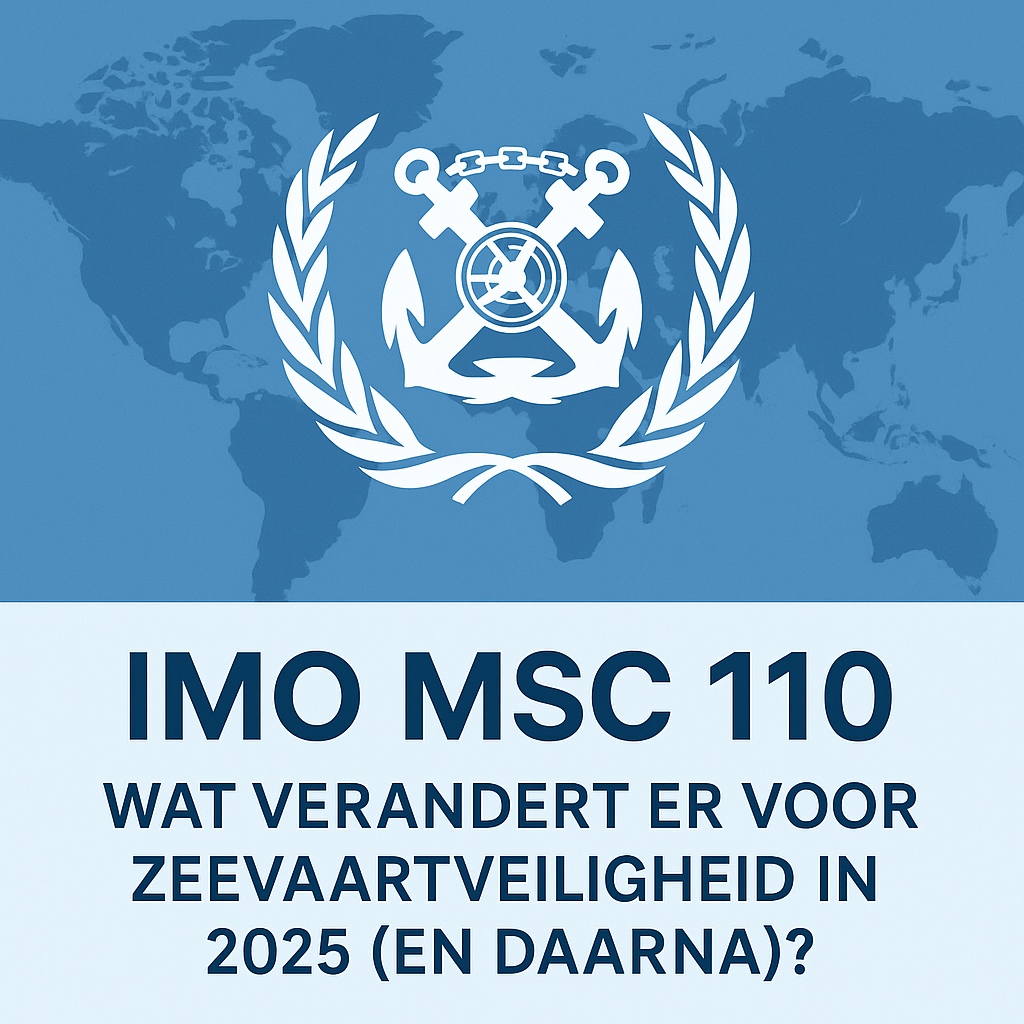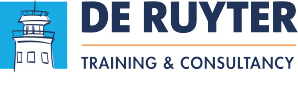
What Will Change for Maritime Safety in 2025 (and Beyond)?
The 110th session of IMO ‘s Maritime Safety Committee (MSC) took place in London in June 2025. During this meeting, important new safety rules were adopted that directly impact shipping companies, seafarers, pilots and ports.
From the revision of the ISM Code to mandatory new rules for pilotage facilities, these are the maritime developments that you, as an organization, need to anticipate now.
What is IMO MSC 110?
The International Maritime Organization (IMO) is the global regulatory body for shipping. The MSC (Maritime Safety Committee) is their main safety committee. During MSC 110 (June 18-27, 2025), dozens of decisions were made that will feed into international shipping regulations such as SOLAS, STCW and the ISM Code.
1. Revising the ISM Code: More focus on people and culture
The ISM Code is the heart of ship safety management. The IMO has decided on a complete revision of the implementation guidelines, with specific focus on:
- Preventing violence, bullying and sexual harassment on board
- Clear reporting procedures and protection from retaliation
- Mandatory training for crew and shore personnel
- Care for victims (mental and medical support)
⏳ Timeline: The revision runs through 2028. The updated guidelines will be mandatorily applied worldwide thereafter.
Why this is important: The human factor is increasingly proving crucial in maritime incidents. With this focus on safety culture and crew welfare, the ISM Code becomes a more powerful tool.
2. Fatigue & work/rest hours: Fair enforcement at last?
The MSC has commissioned an in-depth analysis of the rules around seafarers’ work and rest times. The well-known “6 on 6 off” schedules often lead to chronic fatigue.
Objective:
- Better match between crew strength and workload
- End of “fiddling” with timekeeping
- Possible adaptation of STCW regulations.
Timeline: Survey in 2026-2027, possible adjustments in 2028.
What you can do right now: Start recording hours honestly, reassess crew needs, and implement internal reporting procedures.
3. Mandatory improvement of pilot boarding facilities
One of the most concrete decisions is the introduction of new rules for shed ladders. The reason: incidents and even fatal accidents involving unsound ladders.
New Requirements (SOLAS Chapter V/23):
- Applies to new vessels or new ladders as of Jan. 1, 2028
- Existing plants must be retrofitted no later than the first survey after Jan. 1, 2029
- Strict requirements for material, fastening, positioning, inspection and training
Why this matters: Pilots are essential to safe port entry. This decision directly increases the safety of their work – and reduces liability risks for shipping companies.
To properly understand and apply the new regulations, the documents below provide visual support and technical details on correct piloting arrangements. These have been prepared or approved by the International Maritime Pilots’ Association (IMPA) and are consistent with the amended SOLAS Chapter V Regulation 23.
IMPA Information on Pilot Transfer Operations (May 2024).
A detailed visual poster with all requirements in one A2 format: from minimum dimensions of stanchions to positioning of man-ropes. Ideal for printing and hanging at the gangway.
Stairway & Side Door Arrangements (V16a)
This technical illustration shows how to correctly combine an accommodation ladder and pilot ladder, including stairway door requirements, platform height, stanchion arrangements and attachment points.
Alternative Panel – Bulwark Ladder
An alternative configuration of pilot boarding via the freeboard. Shows how man-ropes are correctly attached to deck and how heaving lines should be available. Useful for ships with non-standard deck structures.
IMPA Information on Pilot Transfer Operations (May 2024).
This brochure compiles the core principles of safe pilotage and clarifies responsibilities, guidelines and technical requirements. Perfect as a reference book for safety managers, captains and training centers.
4. MASS: The first IMO rules for autonomous ships.
The IMO has completed almost all chapters of the new Maritime Autonomous Surface Ships (MASS) Code. Although initially voluntary, it forms the basis for future regulations around autonomous ships.
What’s coming:
- Clear guidelines for safety, communication and emergency procedures
- Duty to rescue plan even in unmanned sailing
- Adoption of MASS code anticipated in May 2026 (MSC 111)
- Mandatory application possible from 2032
What you can do now: Are you working on innovative ship concepts? Use this code as a guide for design and certification.
Important effective dates in a row
| Measure | Deadline / Effective Date |
|---|---|
| New ISM guidelines | End of 2028 (completion) |
| Research work/rest times | 2026-2027 |
| New shed step requirements (new construction) | As of Jan. 1, 2028 |
| Retrofit existing shed installations | 1st survey after January 1, 2029 |
| MASS code approval (voluntary) | MSC 111 – May 2026 |
| Mandatory MASS code (planning). | As of 2032 |
What does this mean for your organization?
For shipping companies and operators:
- Update your SMS documentation and HR policies before 2028
- Invest timely in new shed boarding facilities
- Prepare for stricter control of rest hours and crew
- Follow developments around autonomous ships and alternative fuels
For crew members:
- Increased protection against harassment, fatigue and unsafe situations
- Improved reporting structures and access to support
- New training for innovative ship technologies
For ports and pilots:
- Greater uniformity and safety in piloting operations
- Stronger cooperation through maritime information flows
- Forecast: additional inspections and monitoring of pilot plants
Questions? We’ll help you out.
DRTC closely follows all IMO decisions and translates them into daily practice. Whether it is training, audit preparation or practical implementation: we are ready.
Contact us for advice or support in implementing the new regulations.

